Ramadan 2010
The Islamic Faith / Muslims In Queens
History, Comparisons To Other Faiths & Current Practices
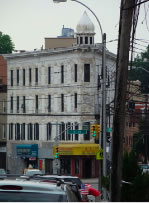 August 21, 2010 / Astoria, Woodside & Flushing / Continued. The following is a report about what we have learned about the Islamic faith over the past few months. Our research included conversations with Queens Muslims and clergy, the reading of the McNeill book referenced in the introduction, as well as some online research.
August 21, 2010 / Astoria, Woodside & Flushing / Continued. The following is a report about what we have learned about the Islamic faith over the past few months. Our research included conversations with Queens Muslims and clergy, the reading of the McNeill book referenced in the introduction, as well as some online research.
Islamic History: Muhammad 7th Century
The Islamic faith was started by the prophet Muhammad in the 7th century AD in what is today Saudi Arabia. Muhammad [this is the correct historical spelling of his name in English] was born in 572 AD. At the age of 40, in 612 AD Muhammad retired as a trader to begin preaching the word of god [Allah]. He soon left Mecca, his birthplace and home, and traveled to Medina where his preaching caught on. In 631 he returned to Mecca victorious, and it is upon this trip that the Hajj is predicated. As an aside, the Hajj is the pilgrimage to Mecca that all Muslims hope to make at least once in their lives.
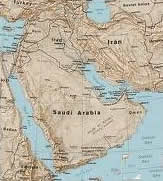 Muhammad & Islam: Unifies The Arabian Peninsula
Muhammad & Islam: Unifies The Arabian Peninsula
Muhammed was instrumental in unifying the various tribes of the Arabian Peninsula. This unity enabled them to live peacefully with each other, while providing them with the strength to achieve military victories against external forces. Part of Muhammad’s success was based on the establishment of Sacred Laws, which provided guidelines for correct behavior in Muslim society.
Islamic Culture: The Sacred Laws – Rules For Correct Behavior
There are four levels of Sacred Law: 1) those guidelines that came directly from Allah through the prophet, 2) those guidelines for behavior which one can intuit based on the example set by the prophet himself, 3) those behaviors that the Muslim community can generally agree upon, and 4) those behaviors that one can derive from the first three levels of Sacred Law based upon making analogies to them.
As mentioned above, Islam’s success was due in part to its even handed means of governing disparate tribes and peoples as based upon the Sacred Laws. The Sacred Laws enabled Islam to make conquests far and wide, because its means of governing was standardized and codified, which at the time was a very new concept. In the 7th century AD the prevailing means of administering justice was based upon the arbitrary whims of the ruling king, emperior or tribal leader. Hence the Sacred Laws, much like American governance today, became an important weapon in winning wars.
The success of Islamic law went beyond its even handed meting of justice. It also standardized the Arabic language by requiring Muslims to memorize the entire Koran. By standardizing the language and codifying expected behaviors, Islam created a universalism or shared understanding within the entire Islamic culture. This enabled them to trade and travel great distances with some comfort.
The Spread Of Islam: Africa, Asia & Europe
Hence Muslim communities, even when religiously diverse, were generally well run because of the Sacred Law. And Islamic rulers were generally tolerant, as they balanced the warrior factions with holy men. The Islamic faith spread throughout the Arabian peninsula, throughout much of Africa - particularly along its northern and eastern coasts, into Persia [modern day Iran], Pakistan, Bangladesh and India, down through Malaysia and deep into the Indonesian archipelago. Many of the people inhabiting these regions continue to practice the Islamic faith.
In the 13th century Ghenghis Khan conquered 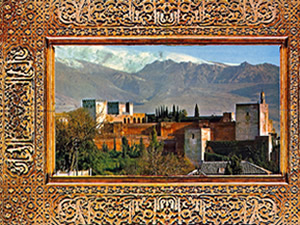 Persia [modern Iran] and following his death the Mongols conquered Baghdad [in modern day Iraq]. But before the century ended, the Mongols had become converts to Islam.
Persia [modern Iran] and following his death the Mongols conquered Baghdad [in modern day Iraq]. But before the century ended, the Mongols had become converts to Islam.
Islam also made its way into China as early as the 8th century. There’s ample evidence showing that Muslims were trading with the Chinese in Xi’an, China during the Tang Dynasty around the beginning of the 8th century. Muslims created the Silk Road to China some 500 years before Marco Polo traveled it. Islamic traders settled in Xi’an China where a Muslim community, complete with centuries old mosques, continues to this day.
Islam pushed its way into Europe, through the Iberian peninsula, where it nurtured Toledo and Granada in Spain as great cultural centers, during Europe’s Dark Ages. Europe’s Dark Ages started following the sack of Rome [400 – 500 AD] and ended with the beginning of the Renaissance period [1400 AD]. During the latter years of Islamic rule, the Moors finished building the Alhambra [translation - red fortress], which is one of the most beautiful buildings in the world, complete with lavish, manicured gardens and fountains. The photo above is of the Al 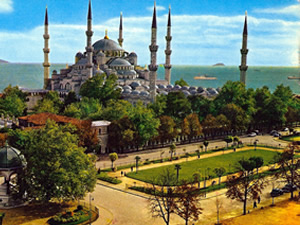 Hambra which was built by the Moors in Granda Spain.
Hambra which was built by the Moors in Granda Spain.
Toward the end of Islam’s cultural dominance [1453], Islam finally made its way into Constantinople in Turkey [modern day Istanbul]. Constantinople was the Eastern seat of the Roman Empire. Little more than a half century following its conquest in 1609, the reigning sultan built a large blue mosque to placate Allah, as he had not won any wars. The Blue Mosque is another great example of Islamic architecture. The photo to your left is of the Blue Mosque in modern day Istanbul.
Islamic Culture – Advances In Mathematics
The Islamic faith and culture flourished from the 7th through the 15th centuries. During this time, Islam also made many advances in the area of mathematics, including the creation of algebra.
In Islamic society, one’s possessions were passed from generation to generation based on heredity. In order to apportion inheritance equally, Muslims had to derive equations with which to fairly measure how much each heir received. The reason that equations were necessary is because there wasn’t yet any universal measure, such as money / currency, with which one could compare the value of one set of objects to another. For example, how many acres of land are equal to a herd of cattle? This would be done by taking the latest trades and establishing algebraic equations to determine the comparable values.
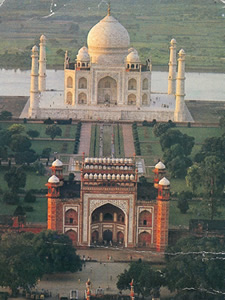 Islamic Influence: Building & Architecture
Islamic Influence: Building & Architecture
The Muslims were also able architects and builders. Muslims designed and built lasting irrigation systems that kept Baghdad a lush oasis for over one thousand years. The splendor and beauty of ancient Islamic architecture is still present today, throughout what was once the Islamic world. It shows the skill, craftsmanship and beauty of Islamic culture.
Great examples of Islamic architecture may be seen at the Alhambra in Granada, Spain [14th Century], the Taj Mahal in Agra, India [1632 – 1653] [the Mughal style combined Islamic, Indian and Persian architecture] and the Blue Mosque in Istanbul, Turkey. The Taj Mahal is shown in the photo to your left.
Cultural Similarities: Muslims, Jews And Christians
All three religions trace some of their early beginnings back to Abraham’s [Ibrahim’s] time. All three religions, to varying degrees, have ritualistic practices designed to help their members remember stories associated with their faith. And all three religions also rely on the printed word which is used in services: 1) the Koran for Muslims, 2) the Torah for Jews and 3) the Bible for Christians. All three religions have places of worship / reflection: 1) mosques for Muslims, 2) synagogues for Jews and 3) churches for Christians. All three have weekly prayers or recitations. The services of all three religions are officiated by a chosen / appointed member: 1) Imams for Muslims, 2) rabbis for Jews and 3) priests for Christians.
The Koran, The Torah And The Bible
The Christian, Jewish and Islamic faiths hold in high regard the word of god as written in their respective good books: 1) the Koran, 2) the Torah, and 3) the Bible. The Koran and Bible were written following the deaths of Muhammad and Jesus, to preserve the story of their lives and their teaching. The Jewish Torah is generally believed to be written by Moses and ascribed to be “instruction from god”.
In translation Koran means ‘recitations’ and is read by the Imam during services. Likewise, the Torah is interpreted to mean ‘instruction’ and is read from by the Rabbi. The Bible means ‘sacred writings’ and is read by the priest during services.
Religion And Governance – Islam, Judaism & Christianity
Islam, Judaism and Christianity bear other similarities. In each case they appear to have played some role in the governance of the people. In the case of Islam, the ruling heirs were selected based on heredity and holiness, and society was governed according to the Sacred Laws. In Judaism, the Talmud was the book containing the laws of the people. And Christianity was made the official religion of the Roman Empire around 400 AD, and for centuries European monarchs claimed to rule by ‘Divine Right’ - meaning god had chosen them to rule. Even today the Bible is used during the swearing in ceremony of the president of the United States, as well as by other American government officials.
Islam, Judaism and Christianity – Divisions
All three religions have had dissenters over time which has divided each faith. Islam is divided into Sunnis who might be said to be orthodox, and Shi’ites who might be said to be reformed. In the case of Islam, the Shi’ites are generally ascribed to be Persian which today is Iran, while the Sunni’s are represented throughout most of the rest of the Arabian peninsula, although Iraq contains a large mix of both Sunnis and Shi'ites.
In Judaism there are Orthodox and Reformed Jews. The Orthodox Jews subscribe to many traditional practices including the males wearing the yamulke [skull cap], the males wearing long braids along both sides of their head, and the adherence by both sexes to not touching any one of the opposite sex until marriage. The Reformed Jews have discarded and / or modified some of these practices, while continuing to attend services, particularly during important holidays.
Christianity is generally divided into Orthodox, Roman Catholic and Protestant. See our story on Greek Orthodox Easter for more on Christianity.
Islamic Culture - Modesty & Clothing
 The Islamic faith places a premium on modesty. In fact there are no human figurines or icons shown in the mosques, but instead the mosques are adorned with geometric artwork, beautifully crafted arabesque script or calligraphy.
The Islamic faith places a premium on modesty. In fact there are no human figurines or icons shown in the mosques, but instead the mosques are adorned with geometric artwork, beautifully crafted arabesque script or calligraphy.
Women are asked to dress modestly with scarves [hijabs], and very modest full length dresses [abayas]. This style of dress used to be customary in Christianity as well. In American back in the 1960’s all women were required to wear a head covering in Catholic churches and it was considered scandalous to wear any dress that didn’t extend below the knee. This sort of dress is also found in many other cultures, such as India, which generally frown upon women displaying their shoulders or legs. In the Muslim faith, viewing these parts of the female anatomy, is the exclusive reserve of one’s husband.
Islam & Ramadan – Muslims & Mosques In Queens
 Everyone who enters the mosque is required to remove their footwear near the mosque entrance. Some of the Queens mosques we visited have cubicles into which you may insert your shoes and other belongings.
Everyone who enters the mosque is required to remove their footwear near the mosque entrance. Some of the Queens mosques we visited have cubicles into which you may insert your shoes and other belongings.
Prayers are said nine times a day and the times vary in accordance with sunrise and sundown. Hence, in modern Queens mosques there are clocks that digitally show the adjusted prayer time schedules.
During Ramadan, which runs from August 11th through September 9th, the entire Koran will be recited over the course of the month. During this time as stated previously, Muslims fast from sunrise to sunset, neither eating or drinking. The Koran in English means ‘recitations’ and it contains the words of god as heard by and spoken by the prophet Muhammad.
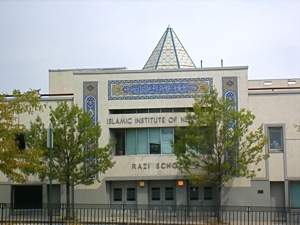 Services inside a mosque are given by the Imam, who is comparable to the priest in Christian services. The Imam reads from the Koran in a chanting / musical like manner while the mosque attendees or parishioners listen and respond in chorus at appropriate times. This is similar to Catholic services where parishioners sing choruses.
Services inside a mosque are given by the Imam, who is comparable to the priest in Christian services. The Imam reads from the Koran in a chanting / musical like manner while the mosque attendees or parishioners listen and respond in chorus at appropriate times. This is similar to Catholic services where parishioners sing choruses.
At the end of Ramadan, Eid al-Fitr is celebrated and literally means to break the fast. Following Eid al-Fitr, Muslims are asked to fast six more days because they believe they will be rewarded ten times for each day of fasting, hence with the 30 days of fasting plus 6 more days of fasting, they will be rewarded for the rest of the year. Ramadan means ‘intense heat’ and historically was a period when there wasn’t much food available.
Assalaamu Alaykum
Assalaamu alaykum [this is a traditional Muslim greeting of good fortune].
Site Search. 1) For best results, when typing in more than one word, use quotation marks - eg "Astoria Park". 2) Also try either singular or plural words when searching for a specific item such as "gym" or "gyms".
$element(bwcore,insert_search,N)$
Click this link to search for something in our Queens Business Directory containing over 1,000 listings.
Send this story to a friend by filling in the appropriate box below.













